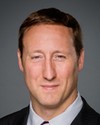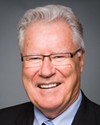I'll try to respond to a few of them quickly.
On the long-term procurement strategy, we have the broad-brush strokes of the Canada First defence strategy that talks about building all the pillars of the Canadian Forces. This includes investments in equipment, the infrastructure where we house the equipment and where members train, and, most importantly, personnel issues.
Within that strategy you will find dedicated finances for procurement. That includes the refurbishment of all of the major platforms such as shipbuilding, JSS, but also all surface combatants with respect to ice-breaking capability and offshore patrol. Those are not directly under our purview, but they obviously impact Canada's overall shipbuilding strategy.
On the air force, priority funding has been earmarked for replacement of CF-18s and our fixed-wing search and rescue aircraft. We have procured the C-130 replacement contracts now for our Hercules aircraft--so the next generation of that transport capability. We've already purchased and received the C-17s, the heavy transports. We bought used Chinook aircraft that are currently operating in Afghanistan. That was part of the independent recommendations of the panel. We are also purchasing new Chinooks, the F model, for post-Afghanistan operations.
On the family of land combat vehicles, that was a $5-billion procurement. We're working through that, but that money has been set aside specifically for land combat capability. There have already been numerous announcements about patrol vehicles, tanks, and trucks, and there'll be more on the infrastructure on several of our bases across the country.
The frigate life extension program for the existing frigates is well under way. You'll find much of that within the Canada First defence strategy, but we can provide you greater details on the dollar amounts and timeframes.
On the training of Afghanistan soldiers, we have been major participants in that from the earliest days through what are called OMLTs and POMLTs--the operational mentoring teams. We've had dedicated efforts in that regard.
On decisions of leadership within the Afghan National Army, I'm not going to dispute what you've said about some of their challenges. However, I would indicate quite clearly, Mr. Martin, that this is a sovereign country. When it comes to the decisions of the leadership, who is in the chain of command, and what cultural or language background they have, we can give advice, NATO can give advice--and they often do--but these are really sovereign decisions, just as they would be in other government departments within Afghanistan.
The numbers are very ambitious. They're in excess of 300,000, I believe, when it comes to the combined security forces of army and police. That was outlined in General McChrystal's report last fall. We set targets and have met and exceeded targets when it comes to the training of a kandak or battalion. But again, we are somewhat beholden to the ability of the Afghan army to provide us with soldiers to train. A big problem that I'm sure you're aware of is literacy levels. It's not enough to simply identify an individual as somebody you're taking into your security forces, but basic literacy skills are often an impediment to the accelerated training pace that we're trying to achieve.
Clearly the end goal here is to turn over security responsibility to Afghans. That has been a primary goal throughout our time on this mission. All countries, all NATO participants--the 60-plus when you include outside countries such as Australia and New Zealand--recognize that we want to enable those Afghan forces to do what our soldiers do and provide the security to propel the Taliban from entering the country, and provide security around the communities that we are currently tasked to protect.







